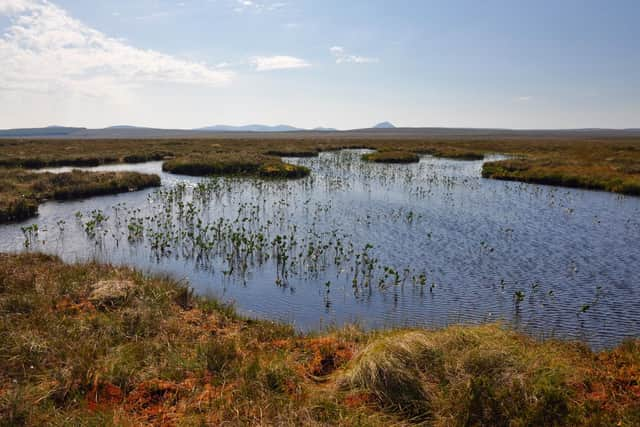Bog standards: Why restoring and protecting Scotland's peatlands is critical
The habitats, formed over thousands of years, are made up of highly adapted plant species and provide homes for a wide range of rare and important wildlife.
They provide a host of environmental services, absorbing pollutants, improving water quality and reducing flooding, as well as holding important cultural and economic value for their contribution to farming, tourism, whisky production and fishing.
Advertisement
Hide AdAdvertisement
Hide AdWhen in healthy condition, peatlands also perform an important role in helping tackle climate change, capturing carbon and preventing it being released into the atmosphere.
Estimates suggest around 1,600 million tonnes of carbon is stored in peat across Scotland – about the same amount as the country’s total greenhouse gas emissions over 140 years.
However, when dried out and damaged, peatlands can actually give off carbon dioxide, driving up emissions and speeding global temperature rise.
The bad news is around 80 per cent of our peatlands are in a degraded condition, caused mainly by human activities such as drainage, conversion for agriculture, burning and forestry planting.


This has prompted a major drive to restore and protect these internationally important ecosystems, including the Scottish Government’s Peatland Action plan.
Now Scottish scientists from the James Hutton Institute and University of the Highlands and Islands are teaming up with partners from across the UK and Europe for a £3.7 million research project that will investigate the risks climate change poses to peat bogs and come up with plans to better care for them going forward.
Meanwhile, a campaign to get Scotland’s Flow Country – a massive area of peatland in Caithness and Sutherland that is alone home to 5 per cent of all the world’s blanket bogs – recognised and protected as a Unesco World Heritage site is moving forward apace, with hopes that designation could be approved in 2024.
A scramble to buy up land with degraded peatlands has also begun in earnest, to take advantage of the emerging carbon trading market.
Advertisement
Hide AdAdvertisement
Hide AdIt’s encouraging to see the importance of these iconic landscapes getting proper recognition, but there’s no time to lose and even greater action is needed to ensure all of our peatlands are returned to good health and harmful activities ended.
Comments
Want to join the conversation? Please or to comment on this article.
